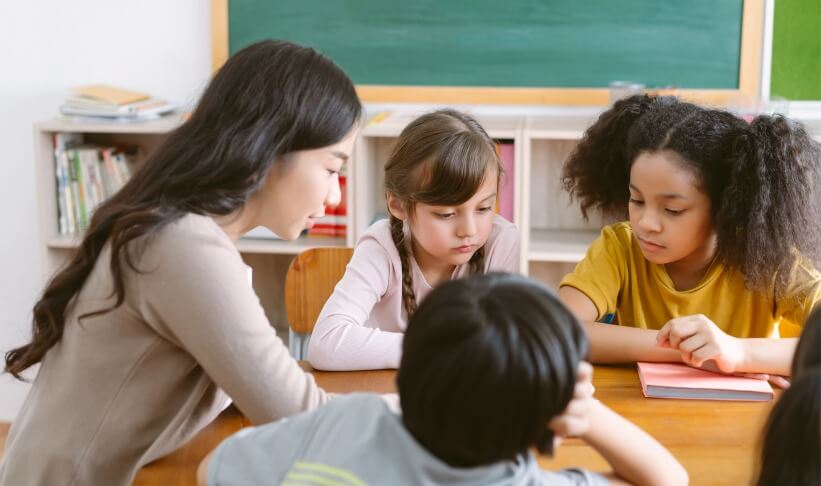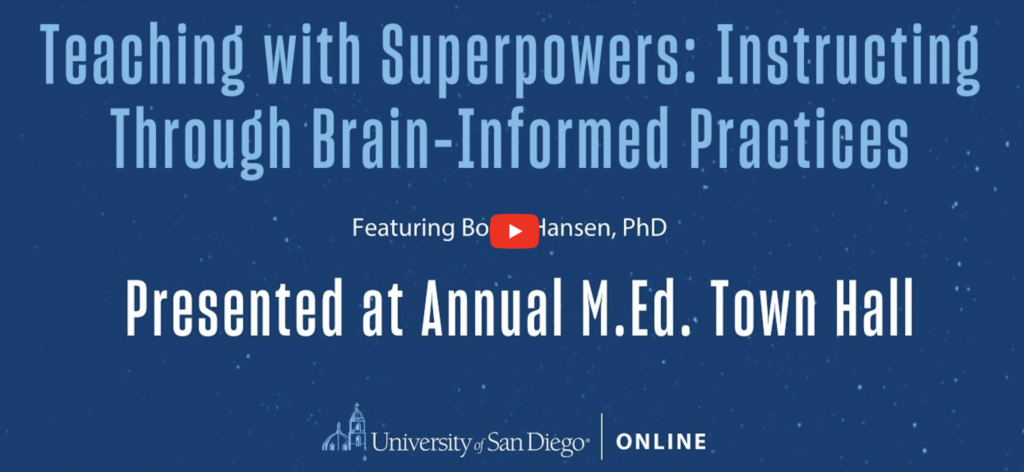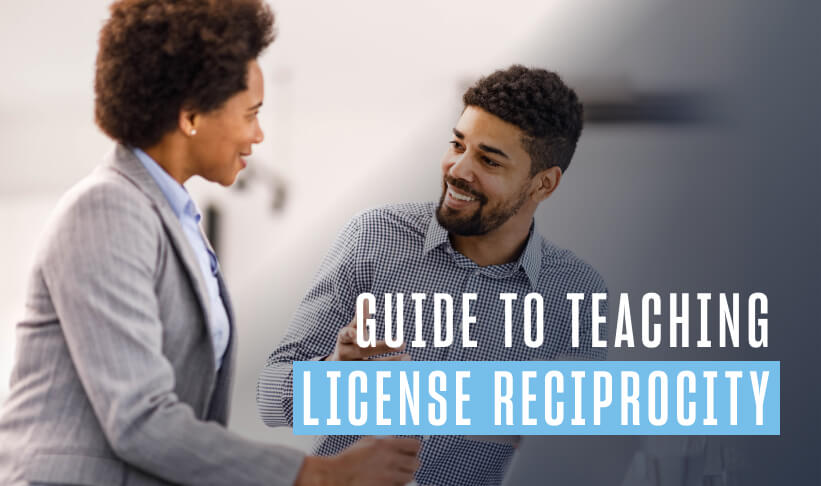Teachers are always looking for strategies to maximize learning opportunities for their students. Cooperative learning is one such strategy. Expanding students’ interactions with course material beyond the teacher’s instruction gives students a dynamic learning environment where they can thrive individually and with classmates.
What Is Cooperative Learning?
Cooperative learning centers around the idea of breaking students into small groups to learn. This allows both individual students and the class at large to grasp concepts through their personal learning styles and those of fellow students.
What separates cooperative learning from other learning strategies is that in a cooperative learning setting, each group member has a separate task to complete or concept to explain to the rest of the group. This way, individual students’ learning benefits the whole group so that students can work toward concept mastery together.
Want the Brochure for USD’s Online Master of Education Degree?
Earn your M.Ed. in just 20 months with a program designed for working professionals.
8 Cooperative Learning Strategies
In a student-centric, cooperative learning environment, students are responsible for leading the learning process. The teacher acts more as a facilitator, helping students understand how to connect the pieces.
Teachers can help their students succeed by utilizing various cooperative learning strategies to support the objective. With strategies ranging from basic to complex, teachers can mix and match learning strategies they feel their students would benefit from the most. Similar to the notion that no two students learn the same way, the same is true regarding cooperative learning strategies.
There is no one-size-fits-all strategy to establish an effective cooperative learning environment. Through understanding, applying and analyzing these strategies in the classroom, teachers can identify which strategies tend to be most effective for different groups of students.
To help you get started, here a few best-practice cooperative learning strategies:
1. Speed quizzes
Give each student a flashcard containing a question and an answer. Break students into groups for a round of virtual speed quizzing, moving from one student’s question to the next in quick succession.
2. Puzzle pieces
Assign each group member one aspect of a larger project. In doing so, group members will have to communicate with one another to put the pieces together.
3. One-minute papers
To assess how well a student comprehends recently-discussed classroom material, have each student write a quick one-minute paper at the beginning of class before diving back into the topic.
4. Sentence completion
As a writing exercise, have students work together to complete sentences on a given topic. One student begins the sentence and then passes it along to the next student in the group. Once complete, the team can review it together for clarity and comprehension.
5. Classmate interviews
Divide students into groups of three. Task one student with writing questions and interviewing another student, while the third student is responsible for taking notes on the interview.
6. Student expertise
Have students lean on one another to expand their respective levels of expertise. This is particularly effective when one student or group of students grasps certain concepts sooner than others.
7. Freeride elimination
Make sure every student is accountable for a specific aspect of a project by “freeride-proofing” the collaboration process. Give each group member a colored marker and a to-do list. By the end of the group work session, there should be a checkmark next to each task, with all the colors represented.
8. Teamwork 101
Before sending your students off to work in groups, make sure they understand what teamwork is and how to work together.
Benefits of Cooperative Learning
As evidenced by the multitude of unique cooperative learning strategies discussed above, the benefits of this collaborative student learning approach extend far and wide.
It can have a positive effect on the following:
- The degree to which students comprehend information
- How students feel about their school, teachers and classmates
- A student’s level of self-esteem and confidence
- Intangibles like social skills, patience, time management, leadership and critical thinking
- Student-centered learning opportunities
- A teacher’s ability to see and understand how their students think
- Helping students understand that others may think differently than they do
- Both hands-on and applied learning opportunities
- Creating a more inclusive classroom community
- Teaching in an environment students will encounter throughout life
- Reducing student disengagement and minimizing classroom management issues
- Giving students a break from listening and a chance to refocus
- Ease of implementation
- A student’s level of achievement
- Providing more authentic learning experiences
- Increasing student motivation and personal interdependence
- Simultaneously engaging as many students as possible
Are You An Educator Considering the M.Ed Path?
Read the top 11 reasons to earn your master of education degree.
What Does Cooperative Learning Look Like in the Classroom?
In a cooperative learning environment, everyone must know their role. In contrast to a traditional classroom setting where a teacher is essentially responsible for all instruction, collaborative learning shifts a teacher’s role to more of a facilitator than an instructor. Teachers can provide general direction and answer high-level questions from students, but students take the lead in cooperative learning.
Think of it like building a house. Once a blueprint is in place, the builder steps back and acts as a project manager, letting different contracting teams do their work. If problems arise, the builder can step in to assist.
A meaningful way to wrap up a cooperative learning experience is to have each group present its work to the class. In doing so, students can gain experience presenting in front of a group and build confidence in public speaking.
Additionally, in-class group presentations can spur more in-depth class discussion, help students develop crucial critical thinking skills and even generate new classroom topics to discuss.
Tips for Implementing Cooperative Learning Strategies
As a teacher, at this point, you’re probably wondering how to best “implement” the different cooperative learning strategies. Regardless of the strategy you plan to use in your class, here are a few tips to help make classroom implementation as effective and efficient as possible:
- Gradually shift into cooperative learning, rather than starting your class with it.
- Explain what the concept of teamwork looks like in your class.
- Make extra efforts to ensure students stay on task.
- Collaborate with fellow teachers for better classroom management.
- Create easy-to-manage groups for more effective and efficient observation.
- Remember that students are likely being exposed to content for the first time.
- Remember that you’re in control of your classroom.





